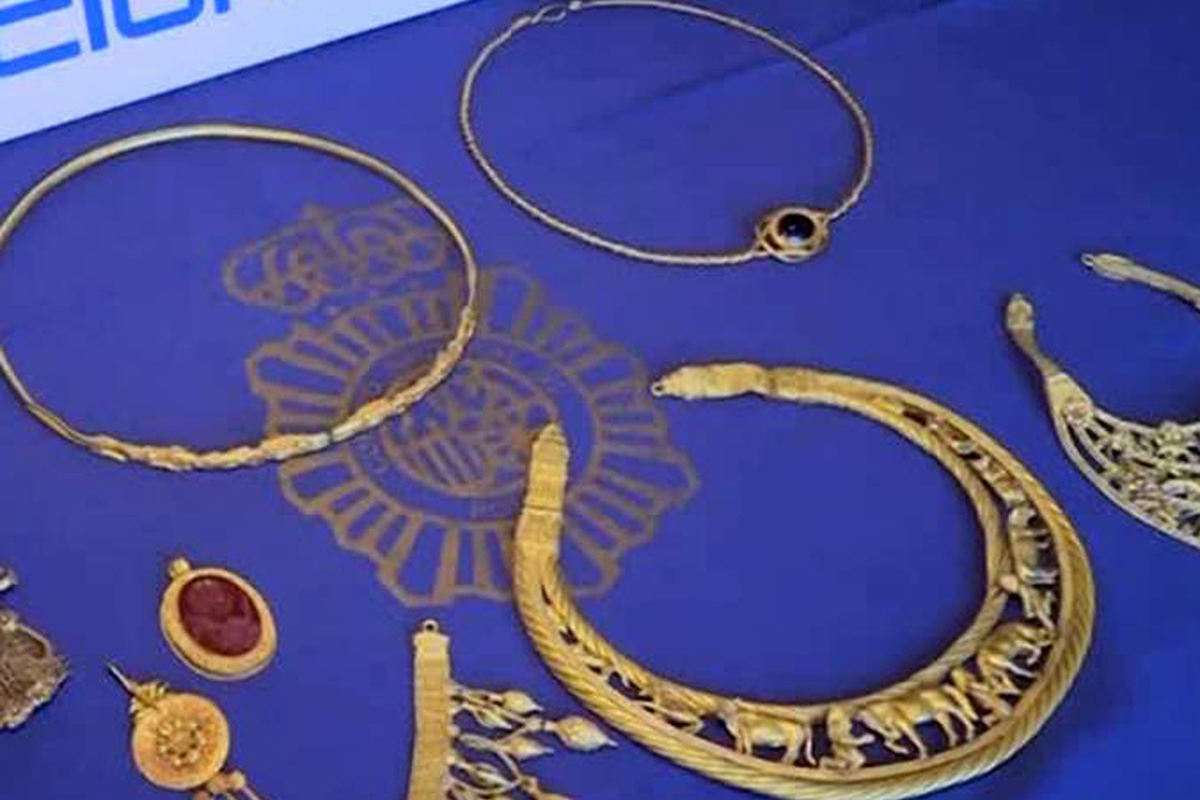Scythian gold found in Spain called a “crude fake”
[ad_1]

History knows many cases of well-executed fakes
The story of Scythian gold discovered in Spain, which, according to one version, was stolen, has developed. The jewelry may be fake, The New York Times reported, citing experts.
Recently, criminals were detained in Madrid who were trying to sell a collection of Scythian gold worth 60 million euros. The police found 11 items from them: beads, bracelets, earrings, which date back to the period between the 8th and 4th centuries BC. It was assumed that this was part of a collection of Scythian gold, which was exhibited in a museum in Kyiv from 2009 to 2013, and disappeared from Ukraine in 2016.
As Caspar Mayer, an archaeologist and professor of ancient Greece and Eurasia at the Bard Graduate Center in New York, told The NYT, only 30-40 Scythian jewelry in good condition has now been discovered in the world. Of these 30-40 copies, a very small proportion is in the hands of private collectors, mostly these collections are in museums. That is, the likelihood that as many as 11 original jewelry suddenly ended up in the hands of one person is very small.
The situation was also commented on by Leonid Babenko, an archaeologist at the Kharkov Historical Museum. N.F. Sumtsova. He noted that the video from the Spanish police shows jewelry that looks like “clumsy fakes”, most likely created for private collectors. “In terms of style and theme, this is an inept imitation of well-known products,” the expert noted.
The situation with fakes in the world of collectors repeats itself regularly. For example, in 2004 there was a scandal associated with an attempt to sell at auction a fake painting by Shishkin. The painting “Landscape with a Stream” with Shishkin’s signature was put up for auction at Sotheby’s in London. It turned out that this was not a painting by the great Russian artist at all. The exhibited work was sold the year before at an auction in Sweden under the signature of the artist Marinus Andrian Koekkoek the Elder. Moreover, for a significant amount – 56 thousand dollars. However, at Sotheby’s they asked for 550-700 thousand euros for the same painting, but under the guise of a work by Shishkin. As a result, the lot was withdrawn from auction in London.
Another case occurred in France. A 166-centimeter statue of a Mayan warrior sold for more than $4 million. The stone figure, sold by a private collector, was considered an example of pre-Columbian art and is believed to be a unique work dating from approximately 550 to 950 AD. However, after the sale, experts found out that the sculpture was made quite recently and was deliberately aged. Moreover, this was a lot from the collection of the Swiss Henry Low, who had already come across fakes many times: out of his collection of 207 works, 67 turned out to be fakes. In general, if a human-sized statue was made believably for as much as 4 million dollars, then why not make “Scythian jewelry”?
It is also possible that the fakes were actually in the museum before. In 2018, during an inventory at the National Museum of Prague, they suddenly discovered that a sapphire weighing 19 carats was not a natural stone, but grown in a laboratory. So the supposed million euros turned into pennies before our eyes. Another stone – a 5-carat diamond – actually turned out to be a simple cut piece of glass. And the surprises did not end there – half of the collection of rubies also turned out to be fake. The reasons for such a large-scale embarrassment could not be found out. Whether this is due to the machinations of museum employees or simply to unprofessional expertise is a mystery.
In general, history knows many cases of counterfeits of antique and valuable items. We can only wait for the clue to the origin of these Scythian jewels to be revealed to us.
[ad_2]
Source link






